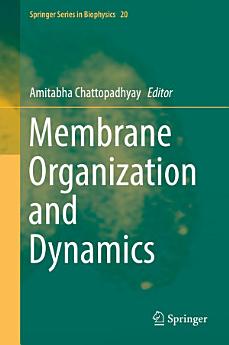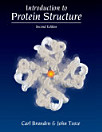Membrane Organization and Dynamics
Amitabha Chattopadhyay
ডিচে ২০১৭ · Springer Series in Biophysics কিতাপ 20 · Springer
ইবুক
387
পৃষ্ঠা
reportমূল্যাংকন আৰু পৰ্যালোচনা সত্যাপন কৰা হোৱা নাই অধিক জানক
এই ইবুকখনৰ বিষয়ে
This volume brings together information on membrane organization and dynamics from a variety of spectroscopic, microscopic and simulation approaches, spanning a broad range of time scales. The implication of such dynamic information on membrane function in health and disease is a topic of contemporary interest. The chapters cover various aspects of membrane lipid and protein dynamics, explored using a battery of experimental and theoretical approaches. The synthesis of information and knowledge gained by utilizing multiple approaches will provide the reader with a comprehensive understanding of the underlying membrane dynamics and function, which will help to develop robust dynamic models for the understanding of membrane function in healthy and diseased states.
In the last few years, crystal structures of an impressive number of membrane proteins have been reported, thanks to tremendous advances in membrane protein crystallization techniques. Some of these recently solved structures belong to the G protein-coupled receptor (GPCR) family, which are particularly difficult to crystallize due to their intrinsic flexibility. Nonetheless, these static structures do not provide the necessary information to understand the function of membrane proteins in the complex membrane milieu. This volume will address the dynamic nature of membrane proteins within the membrane and will provide the reader with an up-to date overview of the theory and practical approaches that can be used.
This volume will be invaluable to researchers working in a wide range of scientific areas, from biochemistry and molecular biology to biophysics and protein science. Students of these fields will also find this volume very useful. This book will also be of great use to those who are interested in the dynamic nature of biological processes.
এই ইবুকখনক মূল্যাংকন কৰক
আমাক আপোনাৰ মতামত জনাওক।
পঢ়াৰ নির্দেশাৱলী
স্মাৰ্টফ’ন আৰু টেবলেট
Android আৰু iPad/iPhoneৰ বাবে Google Play Books এপটো ইনষ্টল কৰক। ই স্বয়ংক্রিয়ভাৱে আপোনাৰ একাউণ্টৰ সৈতে ছিংক হয় আৰু আপুনি য'তে নাথাকক ত'তেই কোনো অডিঅ'বুক অনলাইন বা অফলাইনত শুনিবলৈ সুবিধা দিয়ে।
লেপটপ আৰু কম্পিউটাৰ
আপুনি কম্পিউটাৰৰ ৱেব ব্রাউজাৰ ব্যৱহাৰ কৰি Google Playত কিনা অডিঅ'বুকসমূহ শুনিব পাৰে।
ই-ৰীডাৰ আৰু অন্য ডিভাইচ
Kobo eReadersৰ দৰে ই-চিয়াঁহীৰ ডিভাইচসমূহত পঢ়িবলৈ, আপুনি এটা ফাইল ডাউনল’ড কৰি সেইটো আপোনাৰ ডিভাইচলৈ স্থানান্তৰণ কৰিব লাগিব। সমৰ্থিত ই-ৰিডাৰলৈ ফাইলটো কেনেকৈ স্থানান্তৰ কৰিব জানিবলৈ সহায় কেন্দ্ৰত থকা সবিশেষ নিৰ্দেশাৱলী চাওক।







